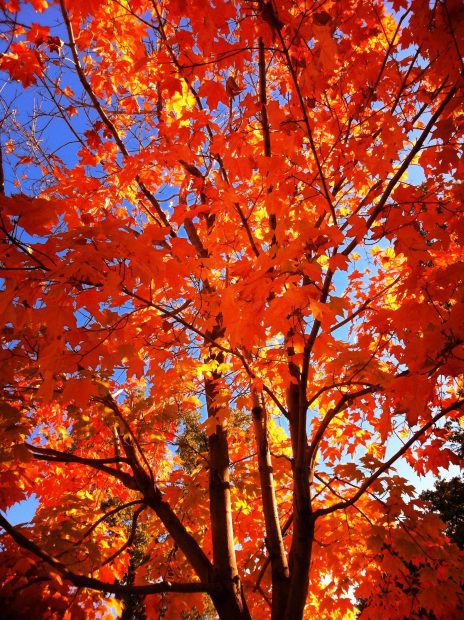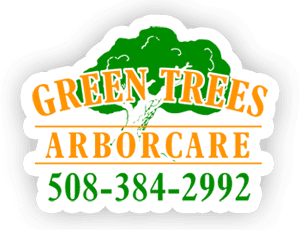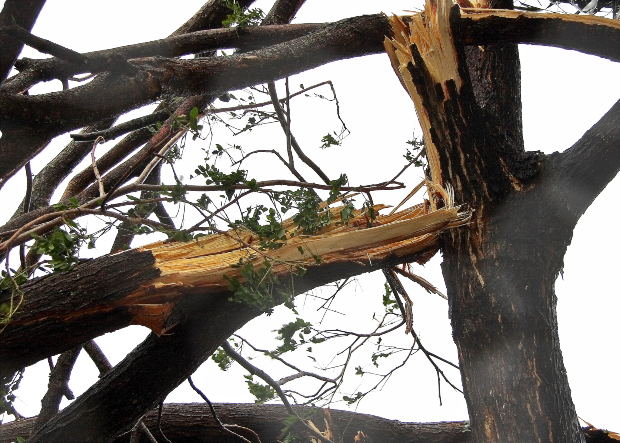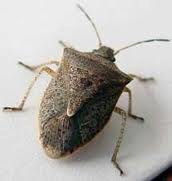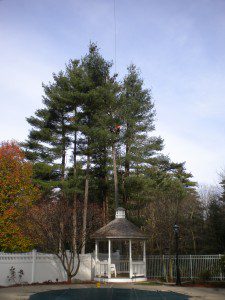
by helper | Aug 28, 2014 | Tree Care
As summer begins to come to an end, it is a good time to start thinking about fall tree care. The stunning New England autumn foliage will be here before we know it and while the hotter months may be behind us, there are still ways to properly care for the trees on your property.
The following are some helpful fall tree care tips to consider over the next few months:
- Avoid pruning in the fall. Fall is the time of year where fungus spreads rapidly and cuts on trees take longer to heal. Unless tree branches are dead or diseased, put down the pruning shears.
- Fall can be a great time to plant new trees. The temperatures will be a bit cooler and won’t create as much stress as some of the summer months. Less stress on a tree allows for a stronger root system to develop.
- If planting new trees in the fall, be sure to properly water them. A long and deep watering helps the roots to grow downwards, making them stronger; whereas a short and shallow watering creates roots that grow upwards and end up becoming weak.
- For more mature trees: stop watering at the beginning of fall and allow all of the leaves to drop. Once the leaves have dropped, begin watering again until the first freeze so that the roots have enough water to last throughout the winter drought.
- If planting new trees in the fall, remember that here in New England, our winters can be very cold and harsh. A good way to protect young trees is by laying 3-6 inches of mulch at the base of the tree after the first freeze. Avoid placing the mulch right up against the trunk to avoid moisture getting trapped and creating fungus growth.
If you have any questions regarding fall tree care, please don’t hesitate to contact Green Trees Arborcare at: 508-384-2992 or click here to reach us on the web. We are more than happy to assist you in the health of your trees!

by helper | Aug 21, 2014 | Diseased Trees
The life cycle of a tree is a beautiful thing, especially here in the Northeast. However, a diseased tree can be an eyesore and a potential threat to your property.
The typical life of a healthy, leaf-bearing deciduous tree includes: sprouting in the spring, leaves turning brilliant colors of red, orange, and yellow in the fall, drying out and leaves falling off in the winter, and the tree coming back to life again come springtime.
Trees have the ability to adapt to and withstand harsh conditions, such as extreme weather patterns here in New England. However, it is not uncommon for a tree to become diseased. The tree will do its best to try to fight the disease, but even the oldest and sturdiest trees can lose the battle. Once a tree becomes weakened by one disease, like humans; it can become more susceptible to other diseases.
Anthracnose is a common disease in the eastern part of the United States that goes after hardwood trees, particularly American sycamores, white oaks, dogwoods and black walnuts. Root decay/root rot is another common disease for trees. The roots securely anchor a tree in the ground therefore if a tree has rotten roots; it makes the tree vulnerable to harsh conditions and runs the risk of being knocked over.
There is a difference between an unhealthy tree and dead or dying trees. An unhealthy tree can be caused by the elements such as rain, wind, and sun and often bounce back to health. A diseased tree often has the following telltale signs:
- Decay. Decay can begin from the inside of the tree, making it difficult to notice. However, if there is fungi or soft, crumbly wood present, that is a good indicator that there is decay in the tree.
- Weak branch unions.
- Cracks that create deep splits through the bark.
- Dead wood. Dry, lifeless wood that breaks easily does not allow a tree to bend in the wind. A tree in this condition should be removed immediately because it poses a large threat to your property.
- Uneven growth pattern from years of storms or improper pruning.
A diseased tree can pose a serious threat to you, your family, and your property. If you suspect signs of disease, please contact Green Trees Arborcare for information on pruning, tree care, and tree removal. Safety is always our number one priority. We can be reached at: 508-384-2992 or click here to reach us on the web.

by helper | Jul 3, 2014 | Severe Weather Tree Care
With Hurricane/Tropical Storm Arthur currently making his way up the Eastern coast and putting a damper on 4th of July plans, now is a good time to address proper hurricane tree care. Hurricane season typically lasts from June 1-November 30. The best way to prepare trees for hurricanes is from the very beginning before you start planting. While Massachusetts has been known to have a few significant hurricanes pass through, it is nothing compared to states like Florida and North Carolina. However, if tree damage is a concern of yours when a hurricane or tropical storm does makes its way through the state, here are a few hurricane tree care tips to keep in mind:
- Work with a tree care professional or landscaper to carefully choose trees that are a good option for strong winds and heavy rains.
- Choosing trees with strong root systems, trunks, and branches is the best option.
- There are certain species of trees that are more wind-resistant than others.
- Plant trees away from the house and power lines.
- Once trees have established themselves, contact a professional tree company to properly prune your trees.
- Proper pruning will encourage the development of a sturdy, well-spaced framework of healthy branches around a central leader. The canopy edge can be thinned, allowing air to pass through freely.
- If you feel like there are trees on your property that should be removed because they are already dead, weak, or rotting and fear damage to your property, contact a tree care professional to come out and assess the situation.
Hopefully these hurricane tree care tips will provide some insight before the upcoming storm and the remainder of the 2014 hurricane season.
Here at Green Trees Arborcare, we understand how important trees are but also comprehend the potential dangers they pose to your property when in-climate weather hits. If you need to have any of the trees on your property assessed before taking further action or simply need well-established trees properly pruned, please don’t hesitate to contact us at: 508-384-2992 or click here to reach us on the web.

by helper | Jun 9, 2014 | Tree Pests
Tree pests are a constant-growing issue in the United States. Each year new and invasive species get introduced to different parts of the country and the results can be devastating. Massachusetts and other parts of the Eastern United States has quite a few pests that are common in the area. The Gypsy Moth is one of the most common pests to hardwood trees. Since 1980, the gypsy moth has defoliated close to a million or more forested acres each year. In 1981, a record 12.9 million acres were defoliated. This is an area larger than Rhode Island, Massachusetts, and Connecticut combined (source: About.com-Forestry).
Other common tree pests in Massachusetts include:
- Winter Moth. This moth is known to destroy oaks, maples, basswood, white elm, crab-apple, apple, blueberry, and cherry trees. Adult moths emerge in late November and can be active until January. After mating, the female moths lay egg clusters on tree branches and under bark. The larvae will appear in March and tunnel into buds and devour them and then move on to the next bud. The older larvae feed on foliage. In areas where winter moths are a large problem, they are known to completely defoliate the host plant.
- Asian Long-horned Beetle. This beetle feeds on maple, horse chestnut, birch, poplar, willow, and elm trees. The female beetle will chew a dime-sized oval groove into the bark to deposit her eggs. The larvae damage the tree by eating the layer beneath the bark which creates hollow galleries in the wood. A key indicator of an issue with the tree and this beetle is if there is sawdust around the base on the ground or on the branches where the adults have exited from the tree.
- Brown Marmorated Stink Bug. This insect was accidentally imported from Asia and has been creating problems ever since. The insect is a problem for many shade and fruit trees, vegetables, and legumes. Adults emerge in April and eggs are laid in clusters on the under-sides of leaves from June through August. Aside from being pests to trees and plants in the warmer months, this insect can become a huge nuisance to homes and buildings in the winter when they use them as overwintering sites.
There are certain precautions you can take to control tree pests. For questions please don’t hesitate to contact us at: 508-384-2992 or click here to reach us on the web.

by helper | May 8, 2014 | Tree Care
Hot Weather Tree Care Tips
It may feel like we just came out of a long, cold winter and are now finally able to enjoy the spring; but the truth is summer is just around the corner. Most people associate extreme weather in New England with blustery winters, but our summers can be just as extreme. Massachusetts is no stranger to extremely high temperatures and the dreaded humidity. Hot weather tree care is extremely important for newly established trees, but is also just as important for mature trees.
A newly established tree is weaker and more vulnerable if not properly cared for, but mature trees can also die out from a lack of water. Water evaporates from the leaves of a tree and on a hot summer day a tree can lose hundreds of gallons of water. The best way to prevent trees from drying out is with a soaker hose. The soaker hose will encourage your plants to establish a deep, drought-resistant root system. Water the tree long enough to allow the water to reach 8 to 12 inches down into the soil. Covering the tree’s root system with mulch about 3 inches thick will help to retain the moisture as well as reduce the temperature of the ground. If you choose not to use a soaker hose, sprinklers and hand-held hoses can get the job done.
Another hot weather tree care practice to implement is treating for disease, fungus, and insects. If you notice brown spots on the lawn or an abnormal amount of insects hanging around your trees, contact a professional who can treat the effected area properly.
Proper watering and mulching are the two major keys to success for optimal tree and plant health in the hot summer months. Here at Green Trees Arborcare, trees are our passion. We have an extensively trained, professional team that can cater to all of your tree care needs. Please do not hesitate to contact us with questions or for a quote anytime at: 508-384-2992 or click here to reach us on the web.
